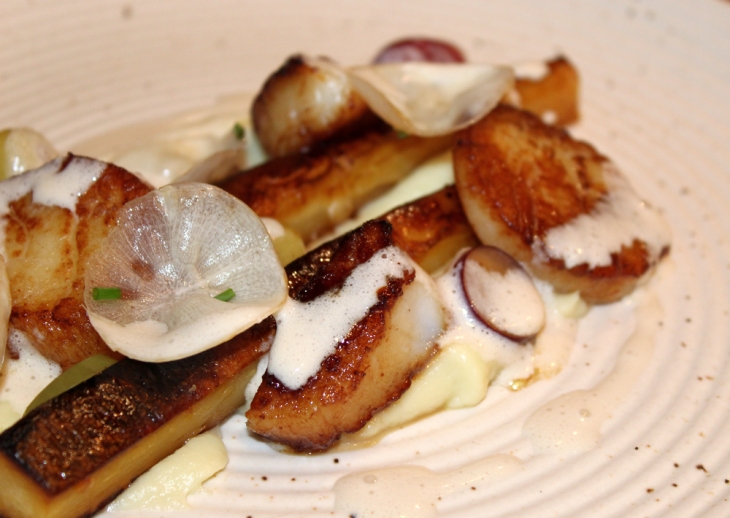
Parsnips and scallops are a delicious match. The coolest thing about this recipe from The Nomad Cookbook is the various ways it uses parsnips. I am especially fond of the cooking method and result of the “pressed parsnip planks” (say that ten time real fast!). I will be using that again for sure. Other than sweet nutty parsnips and shellfish we also have grapes for acidity, freshness and texture. It’s a winning combination fit for a nice quiet dinner.
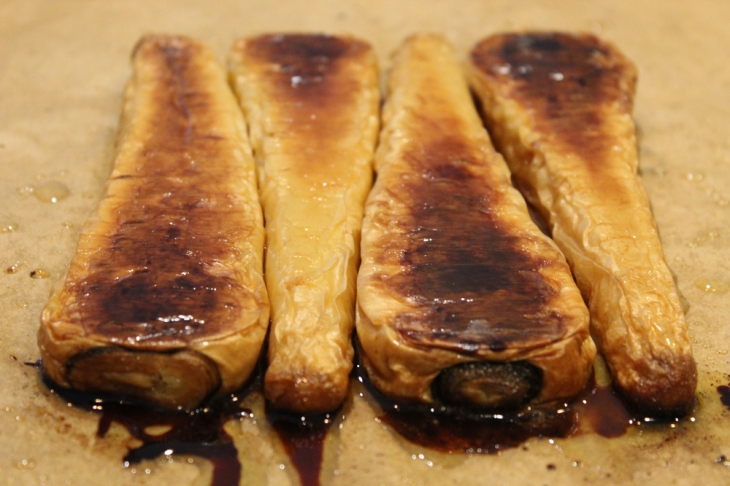

So let’s start with those pressed parsnips planks I liked so much. They are very easy to make. I just tossed 4 parsnips with salt and oil and put them side by side on a parchment lined baking sheet. I topped them with another parchment piece and another baking sheet then weighed them down with a heavy cast iron skillet. After baking them at 350 F for 1.5 hours they are tender, caramelized and flattened. Their texture after the pressed-bake is dense and soft. I cut those into even rectangular planks and before serving I seared them on the skin sides to crisp the skin and add more texture and flavor.
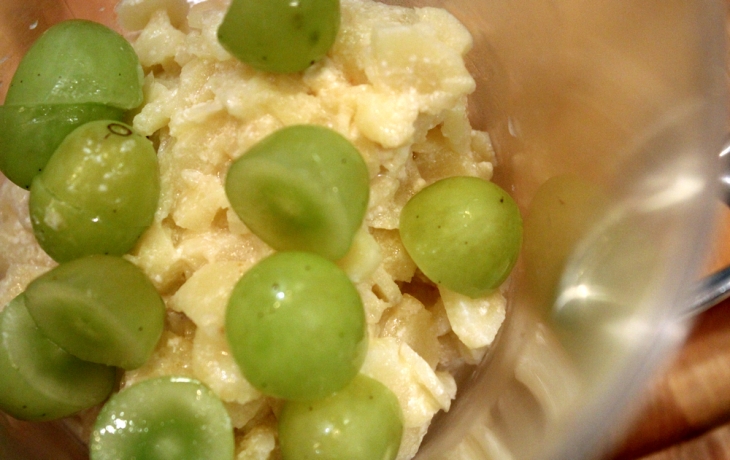
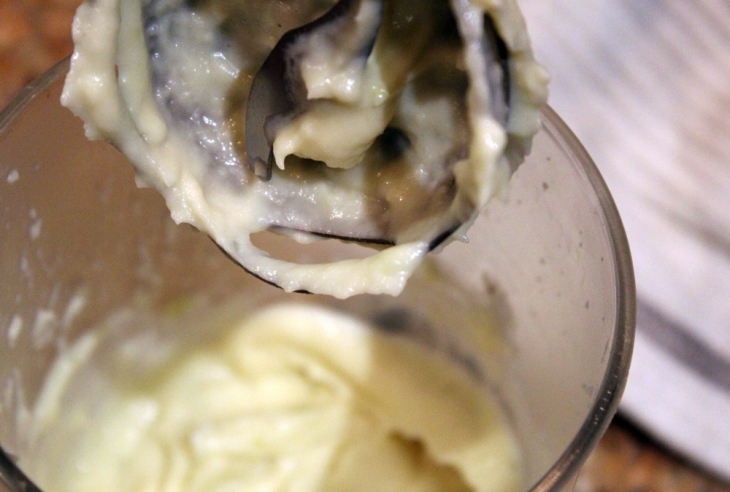
The base for the scallops and vegetables is more parsnip. This one is a puree made from parsnips, sliced and sauteed in butter and cooked in milk until soft. The parsnips are strained and blended with more butter, green gapes and a splash of the cooking milk to get a smooth puree. The mixture is seasoned with white verjus (tart grape juice basically). To get a very smooth puree I passed it through a strainer and kept it warm.
I like the process that Chef Humm uses in Eleven Madison Park books and in the Nomad book to make seafood stocks. He sautees aromatics (fennel, shallots, celery,..) in oil till soft, adds white wine and allows it to reduce well. This is pretty traditional. Then he covers the seafood and aromatics with ice instead of water. I had never seen this before. The ice gently melts, extracts the flavor from the seafood and simmers for no more than 30 minutes. Done. For this recipe I am supposed to use lobster stock to make lobster nage.

Not sure how to exactly define the French sauce category of nage. It really sounds cool and smooth and classy. Best way to think of it is an enriched stock made creamy with butter. In this case, I made fish stock (no lobster shells lying around) with red snapper carcasses using the Humm method. I strained it and “nage-ed” it by reducing it and emulsifying it with butter. Then I blended it with green grapes, a little lemon juice, and Xanthan gum. It got strained and resulted in a lovely rich seafood nage.
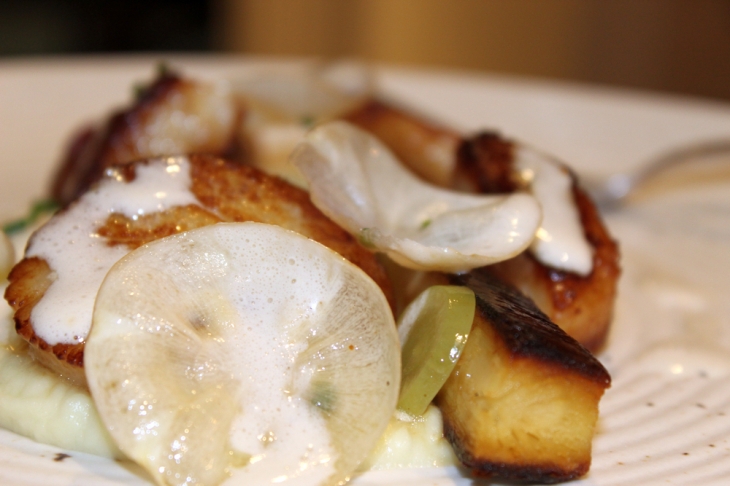
Grapes feature yet again here. This time demi-dehydrated grapes. Green and red grapes are steeped in hot simple syrup for 5 minutes. They are then dehydrated in a 175 F oven until “wrinkled on the outside but still juicy”. This took much longer than the 2 hours the recipe recommends, more like 4 hours.

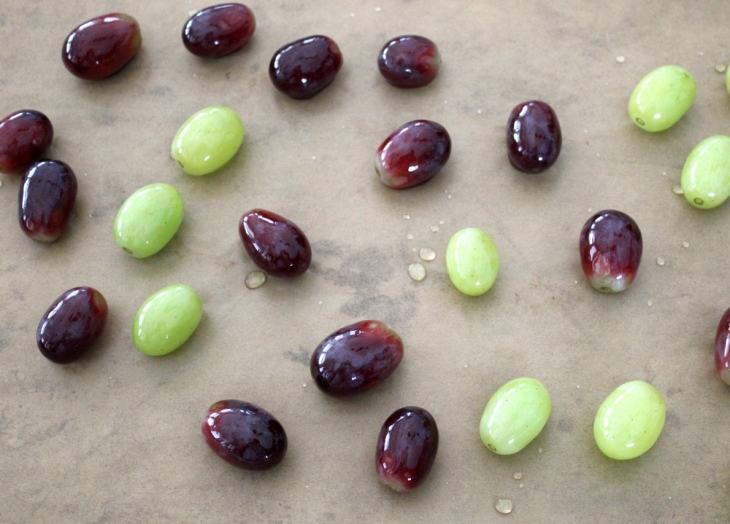
What the hell is parsnip bark and why do we want it here? Well, first roast yet more parsnips -not pressed this time- until very soft. Then carefully remove the skin in big chunks. That skin is the “bark” and after frying in oil and seasoning with salt it is crispy delicious stuff perfect for adding another dimension of texture to the dish. The problem is we kept snacking on them until we had almost none to actually put on the damn plate!
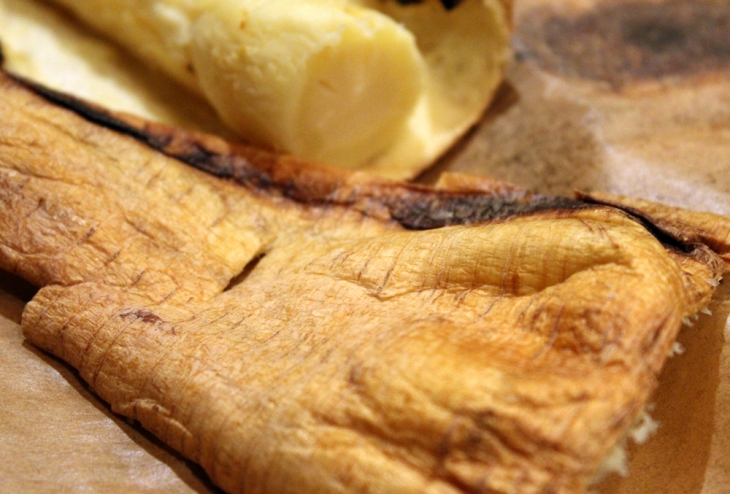

The scallops are probably the easiest part here, brined (I posted about this a couple times), sliced and seared in oil. A couple of more components include sliced raw red and green grapes tossed in a balsamic vinaigrette and paper thin slices of raw parsnip. The parsnip sliced are soaked in ice water until they curl up and look pretty.
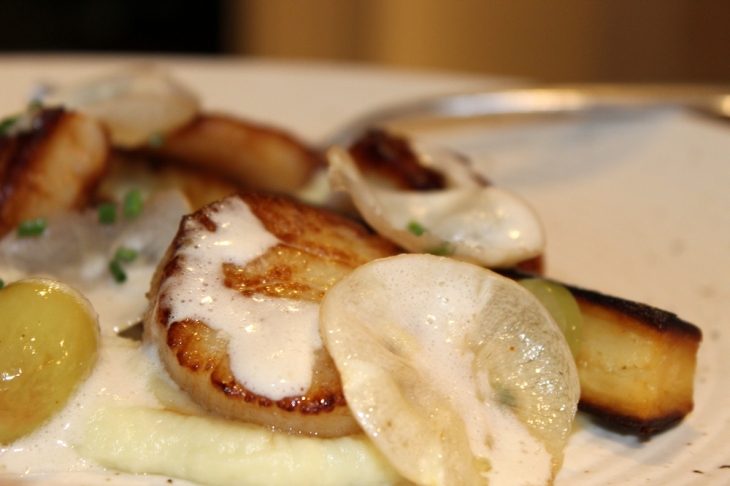
To serve it, I put a thick smear of the parsnip puree on the plate and arrange a couple of parsnip planks on top. Next go the scallops, grapes, parsnip slices and the warm nage.
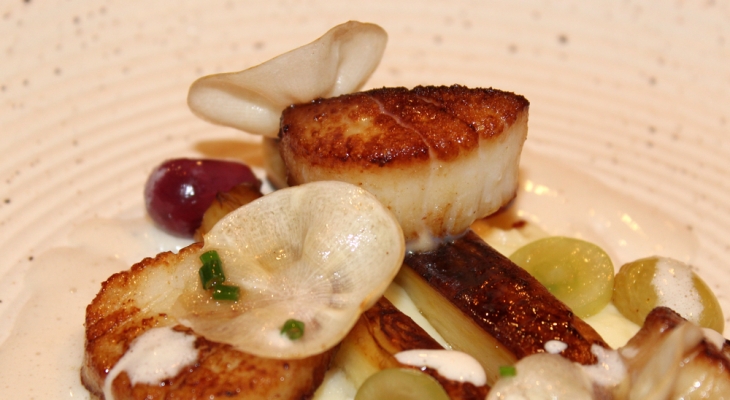


I love the combination of parnips and scallops and have posted some recipes featuring that before. I like the planks and this technique for making the ‘bark’ is better than what I tried before. I always thought that nage refers to the French word for swimming (nager).
Right. You just posted about this combination recently. Definitely try this method to make the crispy bark. It is excellent and most of my pictures of the plates dish ended up without that garnish because we ate it all! You might be right about the origin of nage. I got curious and did some searching. Seems like nage is the result of enriching the cooking liquid of fish or shellfish. So the liquid the fish was “swimming” in.